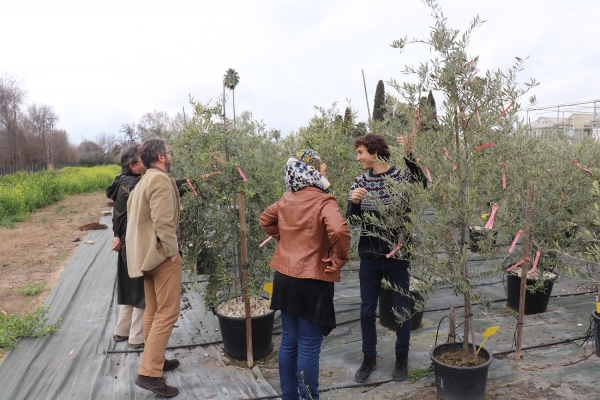The importance of olive grove cultivation, from an economic and ecological point of view, is clear throughout the Mediterranean. Spain generates 38% of the world's olive oil, and in provinces like Córdoba about half of the agricultural area consists of olive trees. Unlike other types of plantations, it is a crop that, by its very nature, requires major, long-term investments, and takes several years to reach its maximum yield.
Thus, investing in the production of this tree can pose a problem for the olive industry, especially in a context like the current one, in which the future of the olive tree can be threatened by the ravages of climate change.
Concentrations of carbon dioxide continue to increase, triggering forecasts of significant increases in temperature throughout this century, which could affect the cultivation of olive trees. This uncertainty forces the olive sector to ask a series of questions: to what extent is it profitable to plant in certain areas? What is the best strategy for the future? What factors should be taken into account to ensure the sustainability of the crop?
In order to answer precisely these questions, the AGR-119 group at the University of Córdoba has participated in a European project, led at the UCO by Professor Francisco Villalobos, through which they intend to optimise management strategies for olive cultivation in the Mediterranean basin. The project, Olive-Miracle, aims to provide tools to evaluate the effectiveness of certain strategies, assist in making investment decisions, and predict productivity and the impact that climate change will have on the cultivation of this tree.
According to Professor Villalobos, traditionally, "classical agronomy has obtained information by measuring, interpreting and performing field experiments", but what do we do in a future context in which it is not possible to experiment on site?
For this, the project has developed a simulation model that predicts how trees will grow depending on different variables. The application, OLIVECAN, carries out simulations in different parts of the Mediterranean, and is able to predict the success of a certain future crop taking into account parameters such as temperature, wind, rainfall, soil condition and location. The tool, according to Villalobos, will make it possible to provide an enhanced level of information, so that the olive industry can make decisions supported by exhaustive knowledge.
Although the model has been in development for several decades, according to another of the project's researchers, Luca Testi, "now, through this work, it has matured, with a level of complexity and universality that has not been seen before". In fact, the program can also make predictions based on the variety of the olive tree, since "varieties such as the Picual and Arbequina do not behave in the same way".
Although the project is still a work in progress, everything seems to indicate that the way in which climate change affects olive groves will depend a lot on how they are managed. According to Testi "the answers we have so far seem to be less dire than we had thought". Although the productivity of the olive grove could be diminished by decreases in precipitation, this could be counteracted by the increase of carbon dioxide in the air, which produces an increase in the speed of photosynthesis and, therefore, in production.
In this regard Villalobos emphasises that future generations will continue to cultivate the olive tree in Andalusia, "although, it will probably be in another way". According to the professor, Andalusia community is a world power in this sector, and its technology in the future will more than suffice to continue producing olive trees profitably.


